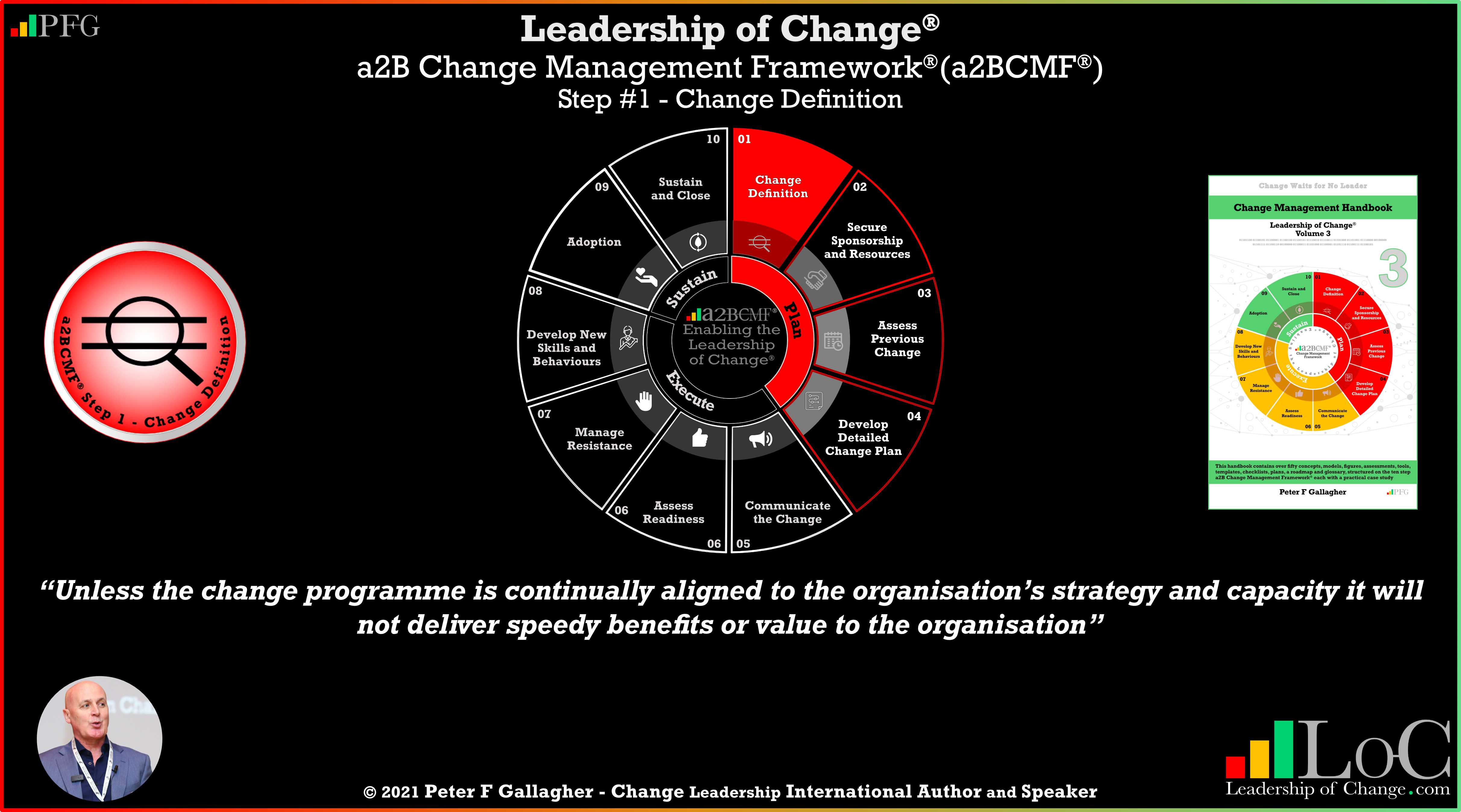
1st Critical Organisational Change Implementation Step - Plan Phase
Change Definition: The process of defining the change and aligning the programmes within the portfolio to the organisation’s strategy, ensuring it has a business case and resources to deliver business benefits.
“Unless the change programme is continually aligned to the organisation’s strategy and capacity it will not deliver speedy benefits or value to the organisation”
Business Benefits: Too many change programmes and transformations fail to deliver the business benefits and value on which they are justified. This step identifies the key foundations that need to be in place to deliver the benefits. This step ensures proper due diligence by assessing estimates of costs, benefits and risks, go/no go decision, etc.
Business Objective: To assess if the change is aligned with the organisation’s strategy, it should have a business case and resources to deliver value, clear stakeholder impacts, proper governance, a high-level timeline and milestones. An important deliverable that could differentiate this change programme from other projects will be benefits planning and tracking.
The a2B Change Management Framework (a2BCMF) is a structured and disciplined approach to support organisations, leadership teams and individuals going through a change, the transition from the current ‘a’ state to the improved future ‘B’ state. The a2BCMF has three phases and ten key process steps. Each phase provides change strategies, principles, analysis and tactics to move from one phase to the next.
The framework is based on over thirty years of international change experience and brings together leading practice in change, people and programme management. The structured programme approach, processes, techniques and tools focus on overcoming the failures of previous change by incorporating ten key steps and success elements for achieving organisational change. It supports strategic change implementation in terms of context, content and process. The framework is a comprehensive management model that allows executives, managers and change practitioners to successfully deliver and achieve organisational change. It requires a holistic approach and some steps can be performed simultaneously.
By Peter F. Gallagher
Keywords: Leadership, Change Management, Business Strategy

 Autonomous Wingmen: Scaling Sustainable Aviation via NVIDIA NAT and Formation Flight
Autonomous Wingmen: Scaling Sustainable Aviation via NVIDIA NAT and Formation Flight The Board Chair as the Primary Lever of Psychological Safety
The Board Chair as the Primary Lever of Psychological Safety Friday’s Change Reflection Quote - Leadership of Change - Change Leaders Maintain Trust and Legitimacy
Friday’s Change Reflection Quote - Leadership of Change - Change Leaders Maintain Trust and Legitimacy The Corix Partners Friday Reading List - January 16, 2026
The Corix Partners Friday Reading List - January 16, 2026 Effective Government Is Built: A Five-Pillar Framework for Public Leaders
Effective Government Is Built: A Five-Pillar Framework for Public Leaders